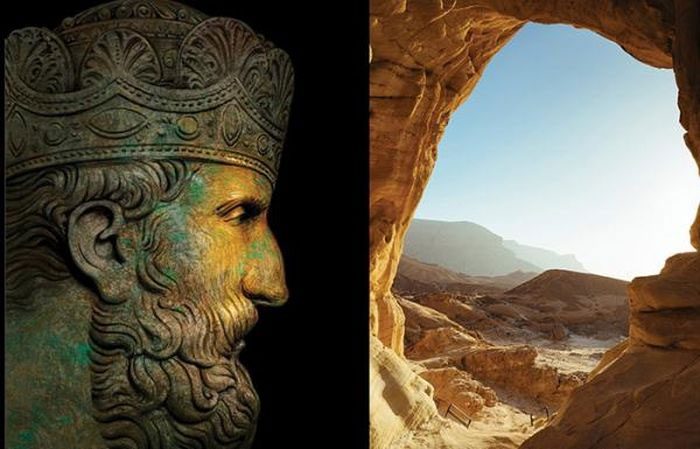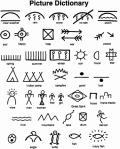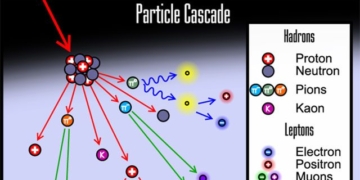Recently, archaeologists have uncovered new evidence of an advanced society during the reign of King Solomon as described in the Bible. In Timna Valley, located in modern southern Israel, amidst the sun-scorched wilderness that appears barren, there are indications of ancient human presence: scratches on stones that turned out to be hieroglyphs dating back over 3,000 years, and caves that are tunnels dug for copper mining millennia ago.
The Forgotten Valley
When Israeli archaeologist Erez Ben-Yosef from Tel Aviv University arrived at the ancient copper mines of Timna in 2009, the site was not particularly appealing to archaeologists. At just 30 years old, Ben-Yosef was not interested in the Bible; his area of research focused on studying changes in Earth’s magnetic field. He and his team were intrigued by the mysterious spike in magnetic activity in the 10th century BCE and came to explore.
Previously, the British had ruled over Timna in the 1930s. At that time, American archaeologist Nelson Gluck visited with a team of explorers. They were guided by Sheikh Odeh ibn Jad, the leader of the local Bedouins, who called it the largest and richest copper mine in Arabia, where metal had been extracted and smelted for millennia. Items dating back to the millennium were also found here, marking the legendary era of the most glorious kings in the Bible: David and Solomon.

King Solomon – author of two books in the Old Testament – accumulated wealth through these copper mines.
The Old Testament describes King Solomon as the richest man in the world at that time, who built the Temple of God, lavishly decorated with precious metals, particularly copper extracted and smelted at these mines. The wealth and wisdom of King Solomon are legendary: “God promised him great wisdom because he did not ask for selfish rewards such as long life or the death of his enemies. The most famous story is the Judgment of Solomon: two women both claiming to be the mother of the same child, and Solomon resolved the dispute by ordering the child to be cut in half to share between them. One woman immediately renounced her claim, proving that she would rather give up her child than see it killed. Solomon declared that the woman who showed compassion was indeed the child’s mother.” Gluck was profoundly impressed by these discoveries, which inspired him.
Another researcher, Rotenberg, studied the mines of King Solomon and uncovered the endless maze of ancient copper mines. They then began excavating stones known as the Pillars of Solomon and unexpectedly discovered an Egyptian temple. By the 1960s, the quest to debunk not only the stories in the Bible but also the existence of kings David and Solomon became fashionable; thus, the discovery of the ancient Egyptian temple at this site greatly pleased the scientific community. A generation of archaeologists and historians began to argue that the Israelites of that time were no different from barbaric Bedouin tribes. Solomon and his father David, if they existed, were merely leaders of one such tribe.
As an impartial scientist, Erez Ben-Yosef’s 2009 discovery of the ancient mines once again disrupted the narrative of the late Bronze Age and early Iron Age. When the mines were operational, the Egyptians were absent. The scientist and his team found remnants of workers’ clothing, their camels, and even 3,000-year-old fossils, with dating clearly indicating the era of David and Solomon.
Archaeologists conducted excavations in the vicinity of Timna and coincidentally discovered ancient mines, all of which were for copper.
The Copper Mines of King Solomon in Timna
Remnants of this thriving copper industry from ancient times are scattered throughout the surrounding area. Evidence includes black slag, a byproduct of the copper smelting process. In the context of that era, copper was a powerful economic driver, akin to crude oil today. It was an essential resource for making tools and weapons, marking a significant turning point in human history.
Our ancestors, through a labor-intensive process, transformed copper ore into pure metal through smelting. Once mined, the copper had to be separated from the gangue, requiring the ore to be heated to an astonishing temperature of 1,000 degrees Celsius. The smelting furnace needed to be continuously fired beneath the ore container. To accomplish this, workers blew air through a special tube — a laborious task that took a long time to yield pure metal, synonymous with strength and wealth.
Then the Israelites arrived. Scientists have also unveiled the origins of the Edomite people. According to the Bible, this was a people descended from Esau, the brother of Isaac. Excavations have uncovered remnants of settlements, livestock, other possessions, and ancient texts referring to these people. Archaeologists have found fish bones here, which is peculiar given its distance from the Mediterranean Sea of nearly 200 km. Delicacies such as lentils, almonds, and grapes were also discovered, brought from afar. The most fascinating find was tiny pieces of red and green fabric. Scientists believe they belonged to the Roman nobility. Analysis dates them to around 1,000 BCE when Rome was merely a simple village.
Furthermore, several samples of light pink wool were found. Upon examination, the results were astonishing: it turned out to be nothing less than royal purple. This was the most expensive dye in the ancient world, reserved for kings. If anyone still views ancient Israelites as mere simple nomads, it is time to reconsider that perspective.

In Timna, miners extracted copper from malachite and chalcocite veins. The sandstone mines throughout the valley and underground remain visible to this day.
The Provocative Contributions of Ben-Yosef
Archaeologists often work with artifacts that have existed for centuries or millennia. An archaeologist must possess a considerable imagination, capable of envisioning magnificent structures amid ruins. First and foremost, these structures are always stone buildings and artifacts. The grander the construction, the more advanced the society. Various archaeological schools have fiercely debated whether a united Israelite kingdom existed. The only consensus among them is the question of whether buildings existed or not. Ben-Yosef believes it is unfair to assess civilization in this manner. He cites the example of a social system similar to that of the Mongols. They were nomads, but that did not prevent them from conquering half the world.
Part of Israelite society may have thrived in tents, precisely how the Bible describes it: “there is no mention of stone houses at this time; the society of the shepherds is partially nomadic. They pitched tents as needed and moved seasonally. The Bible recounts that when the Israelites celebrated the dedication of Solomon’s Temple, they joyfully returned to their tents.”
Another point is that the copper mines were developed quite actively, and ample evidence of their development has been preserved. Renowned Israeli archaeologist Aren Meir from Bar-Ilan University has led excavations in the Philistine city of Gath for a quarter of a century. According to the Bible, this was the home of the warrior Goliath. He stated that Ben-Yosef’s discoveries convincingly demonstrate that a nomadic people could achieve a high level of political and social organization. Meir also agreed with Ben-Yosef’s description of this society as akin to the Edomites. Until then, scientists had not adequately considered nomadic peoples and had overly focused on architecture.
Thomas Levy from the University of California, San Diego, the archaeologist leading the excavation at Faynan, stated: “the excavations at Timna have revealed a stunning picture of an industrial landscape from the Iron Age spanning hundreds of square kilometers. Levy acknowledged that this discovery substantiates the biblical accounts of a united and prosperous Israelite kingdom. He said this was something scientists did not expect to find.”
Ben-Yosef’s discovery is not a strong argument for or against the historical accuracy of the Bible. Timna is an anomaly that exposes the limits of what one is allowed to know; it merely prompts us to reflect on the truths that people often believe…





















































